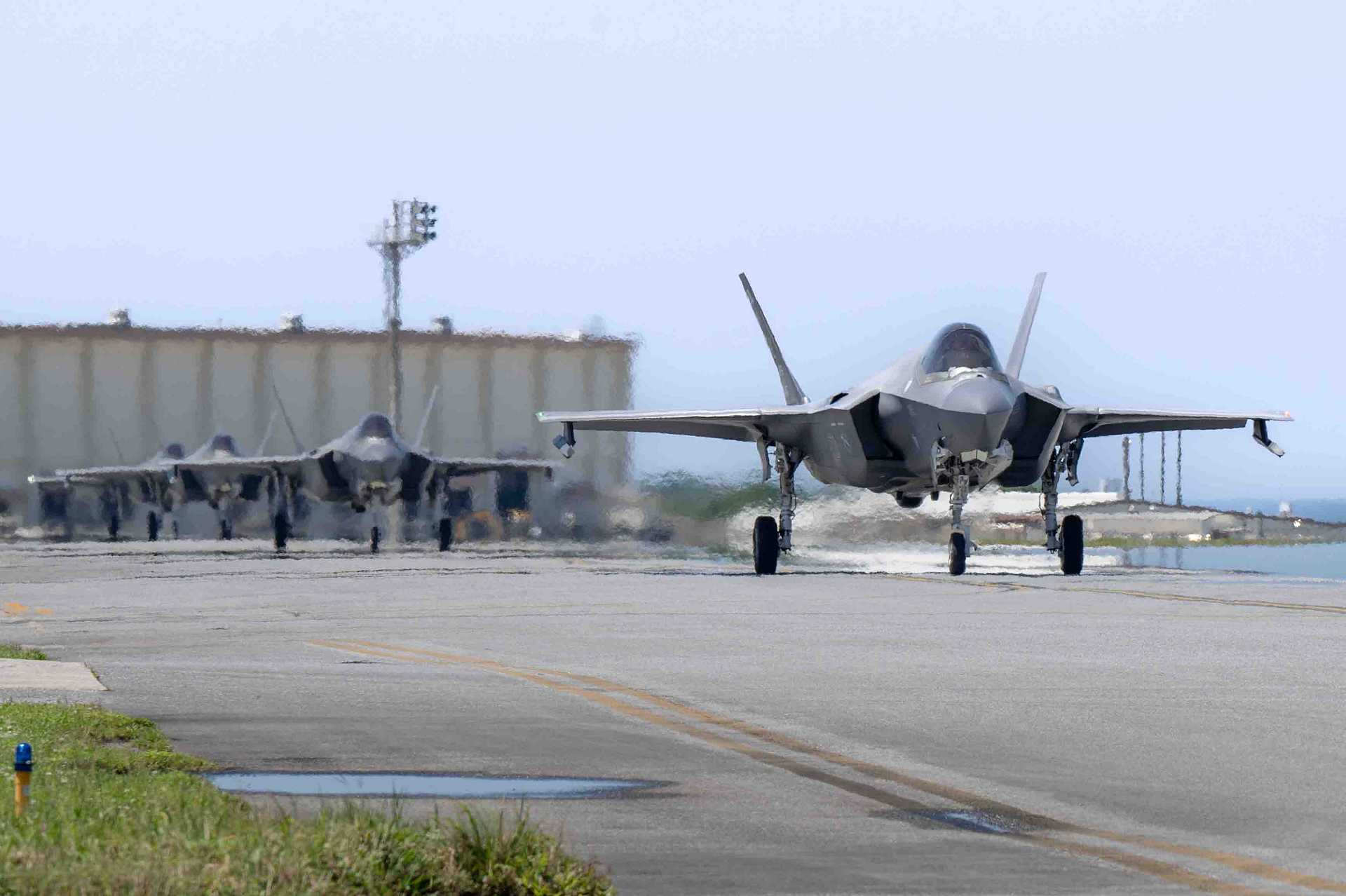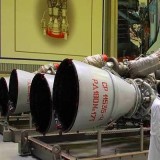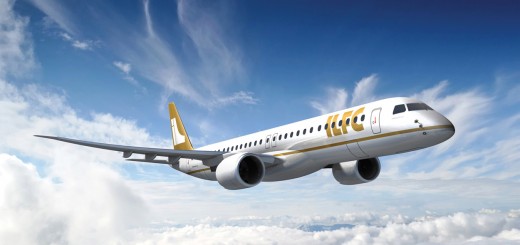Breaking News: Additional U.S. Air Force F-35A Stealth Fighters Deploy to Japan to Strengthen Indo-Pacific Posture

{loadposition bannertop}
{loadposition sidebarpub}
The U.S. Air Force has once again reinforced its strategic military posture in the Indo-Pacific region with the arrival of F-35A Lightning II stealth fighters at Kadena Air Base in Okinawa, Japan. On April 24, 2025, F-35As assigned to the 421st Expeditionary Fighter Squadron (EFS) from Hill Air Force Base, Utah, landed at Kadena, completing the latest round of rotational deployments aimed at sustaining forward-deployed combat airpower in the region. This latest deployment is complemented by additional F-35As from the 355th EFS, Eielson Air Force Base, Alaska, as well as F-15E Strike Eagles from the 336th EFS, Seymour Johnson AFB, North Carolina. All units are working in coordination with Kadena’s 18th Wing Operations and Maintenance Groups, ensuring high readiness and operational synergy.Follow Army Recognition on Google News at this link
U.S. Air Force F-35A Lightning II assigned to the 421st Expeditionary Fighter Squadron, Hill Air Force Base, Utah, taxi after landing at Kadena Air Base, Japan, April 24, 2025. (Picture source: U.S. Air Force)
The Kadena Air Base in Japan plays a critical role as the centerpiece of American airpower in the Western Pacific. Often referred to as the “Keystone of the Pacific,” it stands as the largest U.S. Air Force installation in Asia and serves as a forward hub for rapid air response in times of crisis or conflict. Strategically located in Okinawa, Kadena enables the U.S. military to exert a forward presence, quickly respond to regional threats, and project combat airpower across the East China Sea, Taiwan Strait, and broader Indo-Pacific region. The base is a cornerstone of the Agile Combat Employment (ACE) strategy, a concept that emphasizes dispersed operations, rapid mobility, and resilience in contested environments, allowing U.S. air assets to remain operationally effective even under threat.
The presence of fifth-generation F-35A fighters at Kadena not only augments the combat potential of U.S. forces in the region but also sends a strong signal of deterrence to potential adversaries. The F-35A is the U.S. Air Force’s most advanced multirole fighter, capable of conducting precision strikes and gaining air superiority in heavily contested environments. Its stealth design, advanced sensor suite, and unmatched situational awareness provide pilots with a decisive edge, enabling them to detect and engage threats before being seen. In combination with the F-15E’s proven long-range strike capabilities, the current fighter package enhances both offensive and defensive mission profiles.
These recurring deployments reflect the U.S. Department of Defense’s long-term commitment to maintaining a credible and flexible force posture in the Indo-Pacific. As the regional security environment grows more complex, particularly with increasing tensions around Taiwan and the South China Sea, the continuous rotation of aircraft ensures that the U.S. Air Force remains capable of immediate response and power projection. It also reassures regional allies such as Japan, South Korea, and the Philippines of America’s resolve to uphold a rules-based international order.
Moreover, Kadena’s sustained operational tempo represents a transitional phase in U.S. airpower strategy in the region. With the retirement of aging F-15C/D Eagles that had been permanently stationed at the base, the U.S. Air Force has shifted to a model of rotational deployments while awaiting the full integration of the F-15EX Eagle II. This modernization effort not only improves survivability and lethality but also adapts to the evolving requirements of high-intensity conflict scenarios.
The deployment of F-35As and supporting fighters to Kadena Air Base is a tangible demonstration of the United States’ enduring strategic interests in the Indo-Pacific. It reinforces a credible deterrence architecture, enhances the readiness of forward-deployed forces, and exemplifies the U.S. military’s ability to rapidly scale operations in support of regional security and alliance commitments. As the Indo-Pacific remains the focal point of geopolitical competition, Kadena Air Base continues to serve as a vital launchpad for American power projection and a symbol of steadfast military presence.

{loadposition bannertop}
{loadposition sidebarpub}
The U.S. Air Force has once again reinforced its strategic military posture in the Indo-Pacific region with the arrival of F-35A Lightning II stealth fighters at Kadena Air Base in Okinawa, Japan. On April 24, 2025, F-35As assigned to the 421st Expeditionary Fighter Squadron (EFS) from Hill Air Force Base, Utah, landed at Kadena, completing the latest round of rotational deployments aimed at sustaining forward-deployed combat airpower in the region. This latest deployment is complemented by additional F-35As from the 355th EFS, Eielson Air Force Base, Alaska, as well as F-15E Strike Eagles from the 336th EFS, Seymour Johnson AFB, North Carolina. All units are working in coordination with Kadena’s 18th Wing Operations and Maintenance Groups, ensuring high readiness and operational synergy.
Follow Army Recognition on Google News at this link
U.S. Air Force F-35A Lightning II assigned to the 421st Expeditionary Fighter Squadron, Hill Air Force Base, Utah, taxi after landing at Kadena Air Base, Japan, April 24, 2025. (Picture source: U.S. Air Force)
The Kadena Air Base in Japan plays a critical role as the centerpiece of American airpower in the Western Pacific. Often referred to as the “Keystone of the Pacific,” it stands as the largest U.S. Air Force installation in Asia and serves as a forward hub for rapid air response in times of crisis or conflict. Strategically located in Okinawa, Kadena enables the U.S. military to exert a forward presence, quickly respond to regional threats, and project combat airpower across the East China Sea, Taiwan Strait, and broader Indo-Pacific region. The base is a cornerstone of the Agile Combat Employment (ACE) strategy, a concept that emphasizes dispersed operations, rapid mobility, and resilience in contested environments, allowing U.S. air assets to remain operationally effective even under threat.
The presence of fifth-generation F-35A fighters at Kadena not only augments the combat potential of U.S. forces in the region but also sends a strong signal of deterrence to potential adversaries. The F-35A is the U.S. Air Force’s most advanced multirole fighter, capable of conducting precision strikes and gaining air superiority in heavily contested environments. Its stealth design, advanced sensor suite, and unmatched situational awareness provide pilots with a decisive edge, enabling them to detect and engage threats before being seen. In combination with the F-15E’s proven long-range strike capabilities, the current fighter package enhances both offensive and defensive mission profiles.
These recurring deployments reflect the U.S. Department of Defense’s long-term commitment to maintaining a credible and flexible force posture in the Indo-Pacific. As the regional security environment grows more complex, particularly with increasing tensions around Taiwan and the South China Sea, the continuous rotation of aircraft ensures that the U.S. Air Force remains capable of immediate response and power projection. It also reassures regional allies such as Japan, South Korea, and the Philippines of America’s resolve to uphold a rules-based international order.
Moreover, Kadena’s sustained operational tempo represents a transitional phase in U.S. airpower strategy in the region. With the retirement of aging F-15C/D Eagles that had been permanently stationed at the base, the U.S. Air Force has shifted to a model of rotational deployments while awaiting the full integration of the F-15EX Eagle II. This modernization effort not only improves survivability and lethality but also adapts to the evolving requirements of high-intensity conflict scenarios.
The deployment of F-35As and supporting fighters to Kadena Air Base is a tangible demonstration of the United States’ enduring strategic interests in the Indo-Pacific. It reinforces a credible deterrence architecture, enhances the readiness of forward-deployed forces, and exemplifies the U.S. military’s ability to rapidly scale operations in support of regional security and alliance commitments. As the Indo-Pacific remains the focal point of geopolitical competition, Kadena Air Base continues to serve as a vital launchpad for American power projection and a symbol of steadfast military presence.






